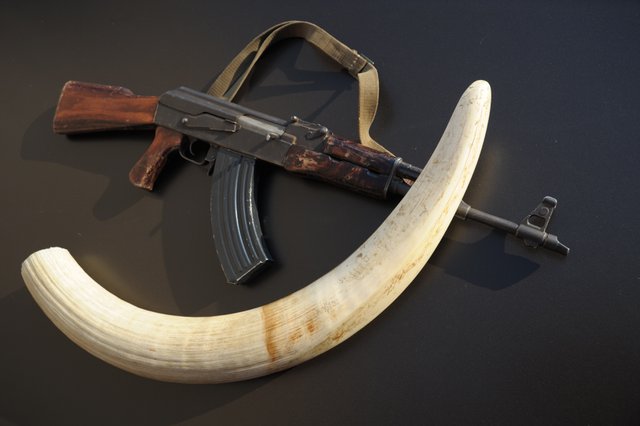
African elephant population drops by dozens of thousands every year throughout Africa. The poaching pandemic fueled by raising demand for ivory in Asia and facilitated by poor governance, law-enforcement and poverty in Africa is responsible for unprecedented threat for the entire species.
The size of the African elephant tusks traded on the market is steadily going down, due to reduction of big tuskers in the wild and rising price for any size of ivory. In the 70es the mean tusk was 12 kg. In 1982 it dropped to 9,7 kg per tusk and in 1988 it was 5,9 kg. In 1990, immediately after the worldwide ivory trade ban it was merely 3 kg per tusk. By 1996 the mean tusk was 5,6 kg and then with newly growing poaching and heavier involvement of East Asian countries the size dropped back to 3,6 kg in 2004. In 2015 it was again just over 2 kg per tusk. (Compare to the biggest ever documented tusk which was 3,26 m long and its weight was 102,7 kg!)
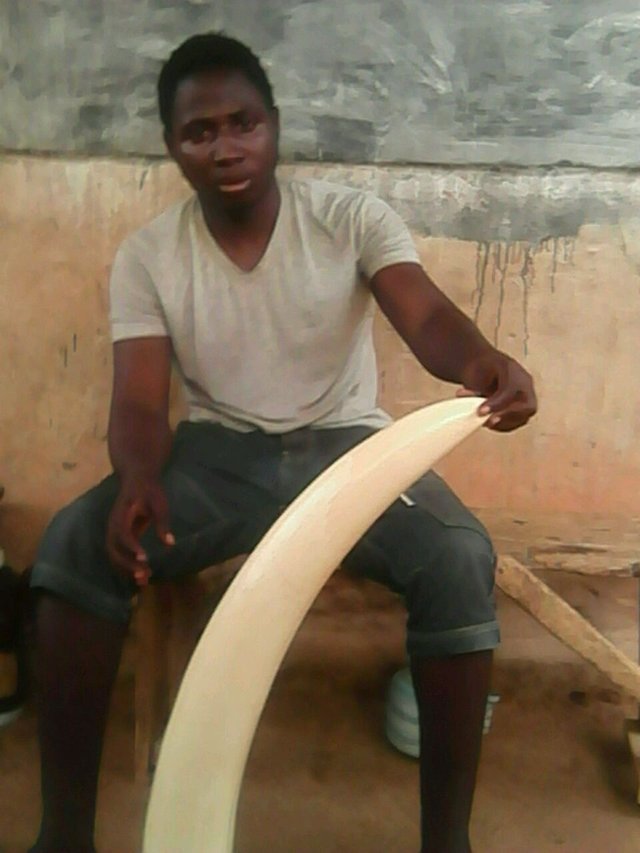
An ivory trafficker presenting a raw elephant tusk. This 11 kg tusk of a bush elephants is polished on the surface and was destined to be shipped in entire piece to Asia to satisfy the market of trinkets and sculptures. Cameroon, 2016.
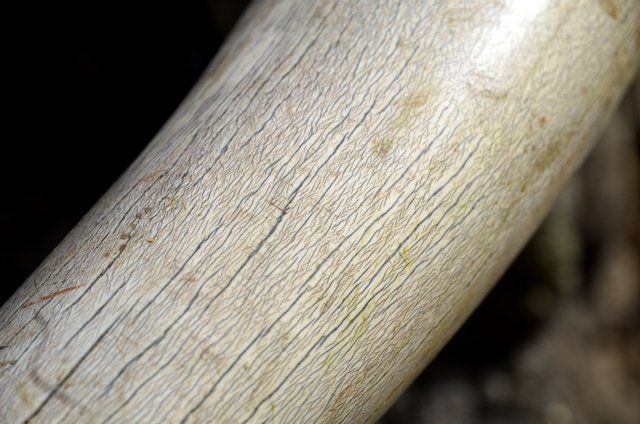
A closer look at the surface of the bush elephant ivory (filmed on a anaesthetized wild elephant during a collaring operation by the Lake Chad. Cracks are visible on this old individual (maybe 50 years of more) and the entire shape and color of the tusk is different than forest elephant tusks in general. Bush elephant's ivory is slightly lighter in weight, softer and also lighter in surface and interior color. Chad, 2013
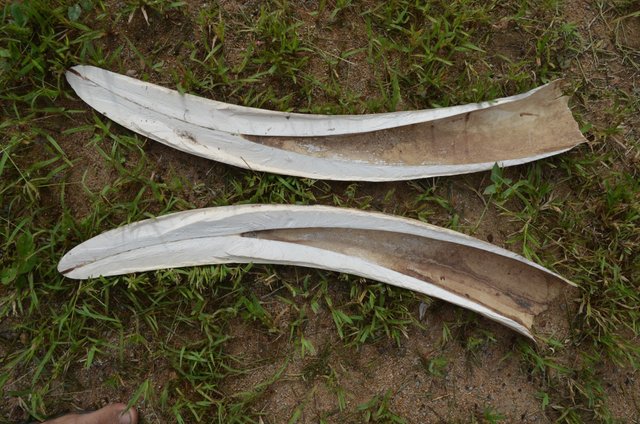
One bush elephant tusk broken in half shows the interior cavity reaching far into the tusk. Therefore, it is also impossible to take out or cut off the tusk to prevent poachers from killing the animals. Chad, 2013
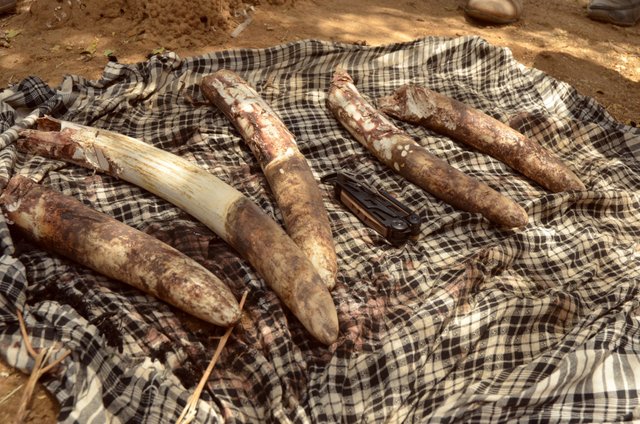
Small tusks from bush elephants recently hacked out from the poached carcasses. These elephants died in Central Chad killed by a group of unknown poachers and not all the ivory has been removed by poachers before the law enforcement units arrived on place. The culprits have not been captured unfortunately. A pocket knife in the middle of the photo shows an approximative size of the little tusks. Chad, 2017.
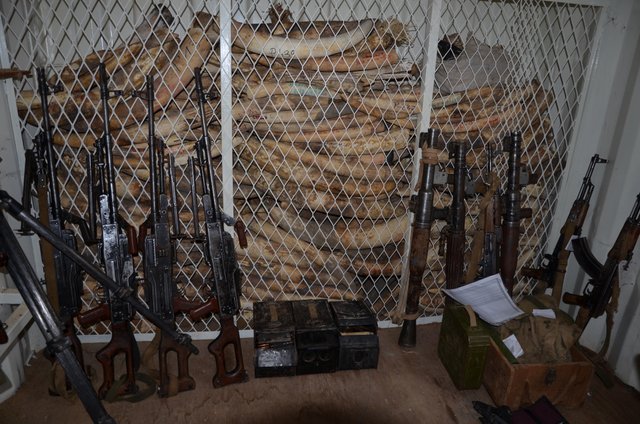
Bush elephant tusks weighting in total about 1 metric ton in the depot of Zakouma national park in Chad. All this ivory has been either seized on poachers, traffickers or found by the anti-poaching teams on dead elephants in the park and around. All of this ivory was later in 2014 burnt by the Chadian authorities on command of the president Idriss Déby Itno, to demonstrate zero tolerance of the poaching and ivory trade. Multiple other countries all over the globe did so prior to Chad or later as well. Chad, 2013.
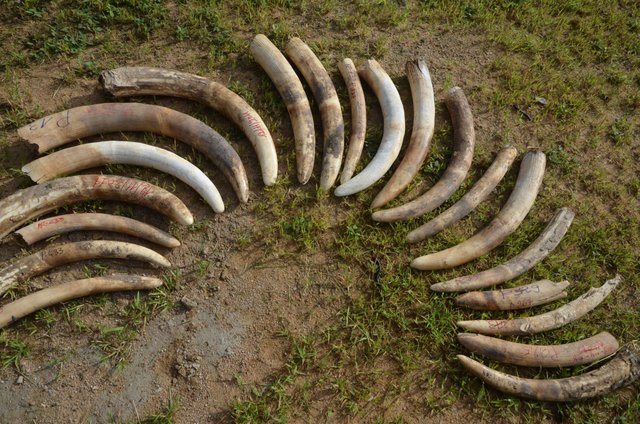
Elephant ivory originating from natural deaths or poached animals in Zakouma in Chad. About 4000 (four thousands!) elephants have been killed in the early years of the 21.century just here in Zakouma, pulling the number of surviving elephants down to as low as 400 individuals. Thanks to joint efforts of the Chadian government and African Parks (which took over the park in terms of management and protection in 2010) the poaching has beed almost eradicated and the elephant population is slowly increasing since that time.
Chad, 2013.
Arthur F. Sniegon, June 2018
Founder and Coordinator of @save-elephants
www.save-elephants.org
E-mail: [email protected]
FB: save.elephants.org
Good topic, we should be more kind to animals, as they are part of our environment.
Downvoting a post can decrease pending rewards and make it less visible. Common reasons:
Submit
Correct. We are one!
Downvoting a post can decrease pending rewards and make it less visible. Common reasons:
Submit
@save-elephants .....peoples are too greedy they don't care architect of forest (Elephant)
Downvoting a post can decrease pending rewards and make it less visible. Common reasons:
Submit